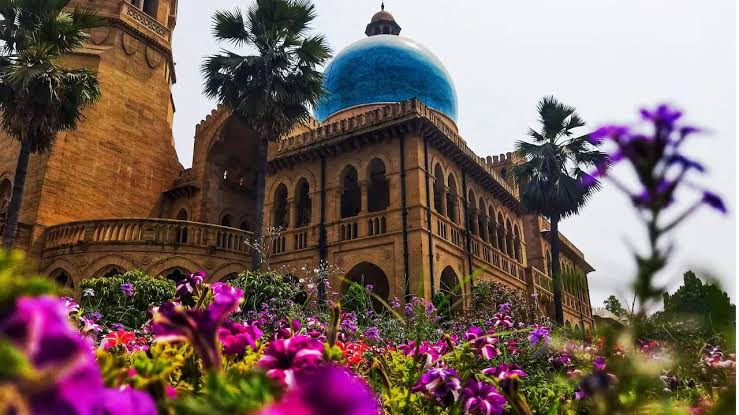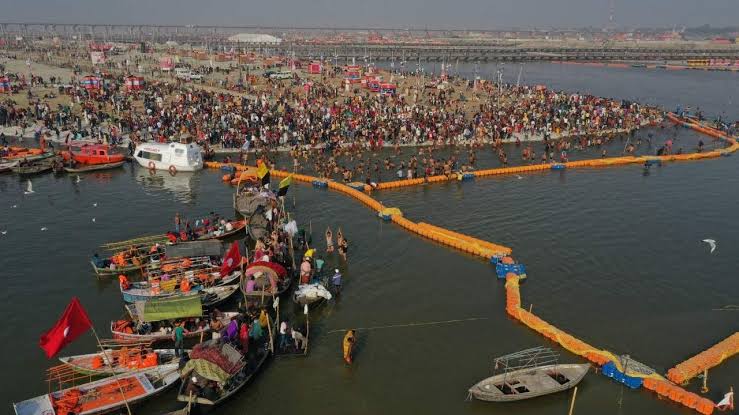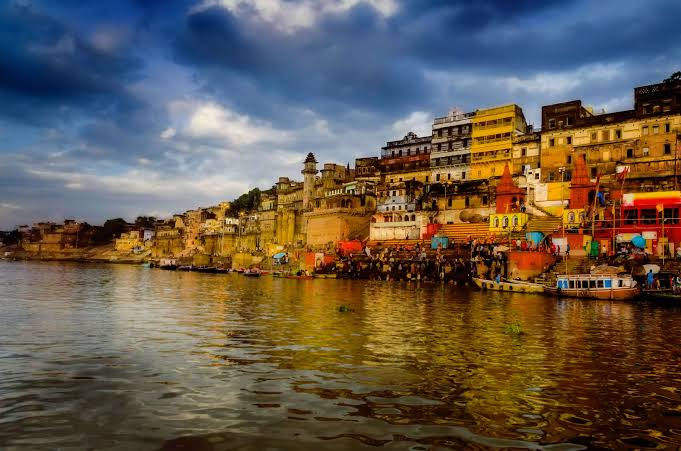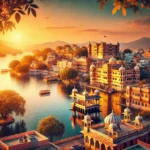
Discover what Prayagraj is famous for with 7 surprising facts that reveal both the best and the worst sides of this historic city. Learn about its rich history, cultural significance, and hidden gems.
Prayagraj Famous For: A Blend of Heritage, Culture, and Controversy
Prayagraj, formerly known as Allahabad, is one of the most historically and culturally significant cities in India. Situated at the confluence of three sacred rivers—the Ganga, Yamuna, and the mythical Saraswati—Prayagraj is famous for its religious significance, historical landmarks, educational institutions, and political movements.
Yet, the city is not without its controversies and challenges. In this blog, we delve into the seven surprising facts that highlight both the good and the bad sides of Prayagraj, offering a comprehensive guide for travelers and curious minds alike.
1. The Spiritual Hub: The Kumbh Mela
Prayagraj is best known for the Kumbh Mela, one of the largest religious gatherings in the world. Held every 12 years, millions of pilgrims and tourists flock to the city to take a holy dip at the Sangam, where the Ganga, Yamuna, and Saraswati meet.
This event is considered highly auspicious and draws in spiritual seekers from all over the globe.
However, the Kumbh Mela also faces challenges such as overcrowding, pollution, and safety issues, which are areas that need improvement.
2. Historical and Architectural Marvels: Allahabad Fort and Ashoka Pillar
Constructed by Emperor Akbar in 1583, the Allahabad Fort is an architectural marvel that reflects the grandeur of Mughal craftsmanship.
The fort houses the famous Ashoka Pillar, which dates back to the 3rd century BC and bears inscriptions from Emperor Ashoka’s reign.
Despite its historical significance, parts of the fort are restricted for public access, which limits the complete experience for history enthusiasts.
3. The Educational Epicenter: University of Allahabad
Often referred to as the “Oxford of the East,” the University of Allahabad is one of India’s oldest and most prestigious educational institutions.
Established in 1887, it has produced many notable alumni who have contributed significantly to Indian politics, literature, and science.
On the downside, the university has faced criticism for outdated infrastructure and lack of modernization in recent years.
4. Literary Legacy: Home to Renowned Writers
Prayagraj has been home to some of India’s greatest literary figures, including Harivansh Rai Bachchan, Mahadevi Varma, and Firaq Gorakhpuri.
The city has nurtured poets and writers who have contributed to Hindi and Urdu literature, earning it a special place in the hearts of literary lovers.
However, modern-day Prayagraj struggles to keep up with its literary past, as fewer contemporary writers are emerging from the city.
5. The Political Hotbed: Birthplace of India’s Freedom Movement
Prayagraj has a significant place in India’s freedom struggle, being the home of prominent leaders like Jawaharlal Nehru and Motilal Nehru.
Anand Bhawan, the Nehru family residence, is now a museum that attracts history buffs and tourists.
Yet, the city’s political landscape today is marred by controversies and rivalries that occasionally turn violent.
6. The Foodie’s Paradise: Mouth-Watering Street Food
From Chaat at Loknath to Kachori-Sabzi at Civil Lines, Prayagraj offers a variety of delectable street food that is hard to resist. The city is a paradise for food lovers who want to explore North Indian cuisine at its best.
But, some might find the lack of hygiene and cleanliness at certain street food stalls concerning.
Order From Here : Zomato.com
7. The Cultural Fusion: Festivals and Events
Apart from the Kumbh Mela, Prayagraj hosts several cultural events, including the Magh Mela and the annual Literary Festival.
These events reflect the city’s diverse cultural fabric and attract tourists and scholars alike.
However, the city’s infrastructure often struggles to accommodate the influx of visitors, leading to traffic jams and other inconveniences.
Interesting Facts and Myths About Prayagraj

Prayagraj is a city steeped in mythological stories, historical anecdotes, and intriguing facts that many visitors may not know. Let’s explore some fascinating aspects that make Prayagraj a city of legends and surprises.
- Myth of the Invisible Saraswati River: While the confluence of the Ganga and Yamuna rivers is visible at the Sangam, the third river, Saraswati, is believed to be invisible and mythical.
- According to Hindu mythology, Saraswati flows beneath the earth and joins the other two rivers at this sacred site, making it a triveni (threefold) confluence. Devotees believe that a dip in these waters cleanses them of their sins.
- The Tale of the Akshayavat Tree: The Akshayavat tree, located inside the Allahabad Fort, is considered immortal by devotees. Legend has it that this tree, known as the “Indestructible Banyan,” has existed since the time of Lord Rama and is believed to be a divine symbol of eternity.
- Some myths suggest that anyone who jumped from the Akshayavat tree would attain moksha (liberation from the cycle of life and death).
- Curse of the Palace of Mirrors (Shish Mahal): Inside the Allahabad Fort is the mysterious Shish Mahal, also known as the “Palace of Mirrors.”
- According to legend, the mirrors here are said to have a curse that brings bad luck to anyone who views their reflection. This myth has been a topic of intrigue and has kept many visitors curious yet cautious.
- The Mysterious Magnetic Field of the Sangam: It is believed that the Sangam area in Prayagraj has a unique magnetic field that enhances the spiritual aura of the place.
- While no scientific evidence supports this, many devotees and sadhus claim to experience a powerful, magnetic pull towards spirituality when they visit this sacred confluence.
- The Enigmatic Underground Tunnels of Allahabad Fort: There are stories of hidden tunnels beneath the Allahabad Fort that are said to connect to various parts of the city and even to distant locations like Varanasi and Delhi.
- Some believe these tunnels were escape routes during battles, while others think they were used to transport treasures secretly. However, the mystery remains unsolved as these tunnels are not open for public exploration.
- The Legend of the Lying Hanuman Temple: The Hanuman Temple near the Sangam area is unique for its reclining idol of Lord Hanuman, which is quite rare in temples dedicated to him.
- According to legend, when the Ganga river rises during monsoon, the waters touch Lord Hanuman’s feet, and it is considered a sign of divine blessings. Locals believe that this phenomenon signifies the bond between Lord Hanuman and the sacred rivers.
- The ‘Lost’ Rivers of Prayagraj: Apart from the Saraswati, there are myths about other ‘lost’ rivers around Prayagraj that were said to flow in ancient times.
- Some locals believe that these rivers dried up due to curses or divine interventions, and their revival depends on fulfilling certain ancient prophecies.

Controversies and Future Prospects of Prayagraj
Like many historic cities in India, Prayagraj has its share of controversies and challenges that have shaped its present and could influence its future. Understanding these dynamics is crucial for anyone who wishes to grasp the full picture of this ancient yet evolving city.
1. Environmental Concerns During Kumbh Mela:
While the Kumbh Mela is a spiritual magnet that attracts millions of pilgrims, it also brings significant environmental challenges.
The enormous congregation leads to concerns over pollution in the Ganga and Yamuna rivers. Despite efforts to manage waste and maintain cleanliness, the impact on the river ecosystem remains a pressing issue.
Authorities have launched several “Clean Ganga” initiatives, but the effectiveness of these programs is often debated. The future of Prayagraj’s environment depends on sustainable practices and stricter enforcement of environmental laws during such large-scale events.
2. Political Dynamics and Law and Order Issues:
Prayagraj has been a political hotspot since the time of the Indian independence movement. While it boasts a rich legacy of producing political leaders, the city has also faced issues of political unrest and law and order problems.
Clashes during political rallies and instances of communal tensions occasionally disturb the peace of the city. Moving forward, Prayagraj needs a stronger focus on maintaining communal harmony and political stability to ensure a safer environment for its residents and visitors.
3. Urban Development vs. Heritage Conservation:
Rapid urbanization poses another challenge to Prayagraj. The expansion of roads, malls, and modern infrastructure sometimes comes at the cost of its historical sites and heritage buildings.
Balancing modern development with the preservation of its rich heritage is a critical issue. There is a growing need for comprehensive urban planning that respects the city’s historical and cultural significance while also meeting the needs of its growing population.
4. The Future of Religious Tourism:
Prayagraj’s economy largely depends on religious tourism, with millions visiting for the Kumbh Mela and other pilgrimages.
However, the city needs to diversify its tourism portfolio to attract different types of tourists beyond religious visitors. Future prospects include developing eco-tourism, cultural tourism, and educational tourism.
Investing in infrastructure, such as better roads, public transport, and accommodation, will be crucial in making Prayagraj a versatile tourist destination.
5. Rejuvenating the Literary and Cultural Scene:
Once known as a hub for literary and cultural activities, Prayagraj has seen a decline in its status as a center of arts and literature.
The city needs to rejuvenate its cultural scene by organizing more literary festivals, art exhibitions, and cultural events. Encouraging local talent and inviting global artists and scholars can bring back its lost glory and re-establish it as a vibrant cultural hub.
6. Addressing Public Health and Safety Concerns:
Prayagraj faces several public health challenges, including waterborne diseases and inadequate healthcare facilities for its growing population.
With the increasing number of visitors during religious festivals, these issues often get exacerbated. Future plans must focus on strengthening the city’s healthcare infrastructure, ensuring clean drinking water, and implementing efficient waste management systems.
7. Digital Transformation and Smart City Prospects:
There is a growing push for Prayagraj to be included in India’s Smart Cities Mission. Integrating digital technology, improving e-governance, and developing smart infrastructure are some of the future prospects that can significantly transform Prayagraj.
With better digital connectivity and smart solutions, the city can enhance its public services, safety measures, and tourism management.
A City of Contrasts and Possibilities
Prayagraj is a city of contrasts—where ancient traditions meet modern challenges, and where spiritual aspirations collide with the need for sustainable development. Its future depends on how well it can balance these contrasts, address its controversies, and harness its full potential to emerge as a city that honors its heritage while embracing progress.
Also Read : Kalagarh Dam Revealed: 7 Breathtaking Reasons to Visit






